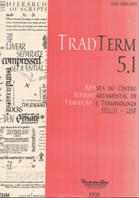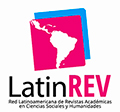On the transiation of Engush there-sentences into Norwegian and Portuguese. What does a translation corpus tell us?
DOI:
https://doi.org/10.11606/issn.2317-9511.tradterm.1998.49797Keywords:
Translation, corpora, there-sentences, det sentences, haver-constructions, English, Norwegian, Portuguese, translation strategies.Abstract
The purpose of this article is to give examples of uses of translation corpora. A translation corpus is an ideal tool in contrastive studies, in translation studies, and more generally in grammar teaching. We focus here on the first of these applications, and study how English there-sentences are translated into Norwegian and Por tuguese. Our findings show how translators translating into different languages resort to similar translation strategies. The differences found in the translations are partly due to grammatical restrictions in the target languages, but we cannot rule out that there may be different approaches to the translating process as well.
Downloads
Downloads
Published
Issue
Section
License
Autores que publicam nesta revista concordam com os seguintes termos:
- Autores mantém os direitos autorais e concedem à revista o direito de primeira publicação, com o trabalho simultaneamente licenciado sob a Licença Creative Commons Attribution BY-NC-SA que permite o compartilhamento do trabalho com reconhecimento da autoria e publicação inicial nesta revista.
- Autores têm autorização para assumir contratos adicionais separadamente, para distribuição não-exclusiva da versão do trabalho publicada nesta revista (ex.: publicar em repositório institucional ou como capítulo de livro), com reconhecimento de autoria e publicação inicial nesta revista.
- Autores têm permissão e são estimulados a publicar e distribuir seu trabalho online (ex.: em repositórios institucionais ou na sua página pessoal) a qualquer ponto antes ou durante o processo editorial, já que isso pode gerar alterações produtivas, bem como aumentar o impacto e a citação do trabalho publicado (Veja O Efeito do Acesso Livre).








